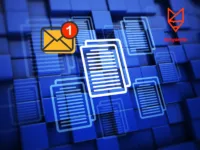In today’s world, email communication has become an essential aspect of modern-day communication. Emails are widely used for professional communication as well as personal communication. As a student, you may have had to send an email to your teacher at some point in your academic career. Whether you are asking for an extension, clarifying a doubt, or introducing yourself, there are certain guidelines that you should follow while writing an email to a teacher. In this article, we will discuss how to write an email to a teacher and how to optimize the content for search engine optimization (SEO) purposes.
Step 1: Determine the Purpose of Your Email
Before you start writing your email, it is crucial to understand the purpose of your email. Do you want to ask for an extension on an assignment, or do you need to clarify a doubt about the course material? Understanding the purpose of your email will help you structure your email clearly and concisely.
- Dear Mrs. Smith, My name is John Doe, and I am a student in your 9th-grade English class.
- Good morning, Mr.Johnson, I hope this email finds you well. My name is Sarah Brown, and I am a student in your Biology class.
- Hello Mrs. Rodriguez, My name is Alex Hernandez, and I am a parent of one of your students, Maria Hernandez, in your 5th-grade class.
- Good afternoon, Coach Johnson, My name is Tom Wilson, and I am a student-athlete on the varsity basketball team.
- Dear Mr. Lee, My name is Emily Chen, and I am the parent of a student in your 11th-grade History class, Henry Chen.
Step 2: Choose a Clear and Concise Subject Line
The subject line of your email is the first thing your teacher will see when they receive your email. A clear and concise subject line will help your teacher understand the purpose of your email before they even open it. Your subject line should be specific and to the point. For example, if you are asking for an extension on a project, your subject line could be “Request for Extension on Project X.”
How to write an email to a teacher | Examples of subject lines
- Request for Extension on [Project/Assignment Name]
- Question About [Topic/Assignment Name]
- Absence Notification for [Date/Class Name]
- Follow-up on [Class Name] Discussion
- Meeting Request for [Date/Time/Topic]
- Request for Feedback on [Project/Assignment Name]
- Assistance Needed with [Task/Assignment Name]
- Question Regarding [Class/Topic Name]
- Request for Meeting to Discuss [Topic/Assignment Name]
- Feedback on [Class/Assignment Name]
- Request for Office Hours Meeting
- Inquiry about [Textbook/Reading Material]
- Clarification on [Class/Assignment Name]
- Question about Upcoming Exam/Quiz
- Request for Letter of Recommendation
- Notification of Technical Difficulties During [Class/Assignment Name]
- Feedback on [Class/Assignment Name]
- Follow-Up on Missed [Class/Assignment Name]
- Request for Extra Help or Tutoring
- Inquiry about Course Requirements/Expectations
- Notification of Absence on [Date/Class Name]
- Request for Approval for [Project/Assignment Name]
- Request for Additional Resources or Materials
Step 3: Use a Professional Greeting
When addressing your teacher, it is important to use a professional greeting. If you are unsure of your teacher’s preferred title, you can use “Dear Professor/Teacher [Last Name]. Always use the teacher’s last name. Avoid using informal greetings like “Hey” or “Hi” as they may come across as disrespectful.
Step 4: Introduce Yourself
If you are writing to your teacher for the first time, it is a good idea to briefly introduce yourself. You can mention your name, the class you are taking, and any relevant information that will help your teacher understand who you are. Keep this introduction brief, as your teacher likely already has your name and basic information.
Step 5: Clearly State the Purpose of Your Email
In the body of your email, clearly state the purpose of your email. If you are asking for an extension, explain why you need the extension and when you would like to submit the project. If you are asking for clarification on a class topic, be specific about what you need clarification on. It is crucial to be clear and concise in your email to avoid any confusion.
How to write an email to a teacher | Examples of stating your request
- I am writing to request your assistance with the homework for this week’s math assignment. I am having trouble understanding some of the concepts we went over in class, and I was hoping you could clarify some of the questions for me.
- I was hoping to schedule a meeting with you to discuss my daughter’s progress in your class. Would it be possible to schedule a time this week to meet with you?
- I am writing to request clarification on the reading assignment for this week’s English class. I am having trouble understanding the instructions, and I was hoping you could provide some guidance.
- I am reaching out to request an extension on the upcoming essay assignment. I have encountered some unexpected personal circumstances that have made it difficult to focus on my coursework, and I was hoping to ask for a few extra days to complete the assignment.
- I am writing to report an incident of bullying that occurred in your class yesterday. I witnessed a student being verbally harassed and bullied by another student, and I believe it is important to bring this to your attention.
- I am reaching out to request an extension on the upcoming homework assignment. I have encountered some unexpected personal circumstances that have made it difficult to focus on my coursework, and I was hoping to ask for a few extra days to complete the assignment.
Step 6: Use Proper Grammar and Spelling
Your email should be written in proper English with correct grammar and spelling. Avoid using slang or informal language. Proofread your email before sending it to ensure that there are no typos or grammatical errors.
Step 7: End Your Email Professionally
End your email professionally with a closing statement and your name. A common closing statement is “Thank you for your time and consideration.” Sign off with “Sincerely” or “Best regards” followed by your name.
- Thank you for your time and consideration.
- I appreciate your assistance and look forward to your response.
- If you have any further questions, please do not hesitate to contact me.
- I will follow up with you in [timeframe] to ensure that everything is in order.
- I am grateful for the opportunity to learn from you.
- I look forward to [upcoming event/class/meeting].
In conclusion, emailing your teacher can be a daunting task, but by following these guidelines, you can write a professional and effective email. Remember to determine the purpose of your email, use a clear and concise subject line, use a professional greeting, briefly introduce yourself if necessary, clearly state the purpose of your email, use proper grammar and spelling, and end your email professionally.
More related Email templates




